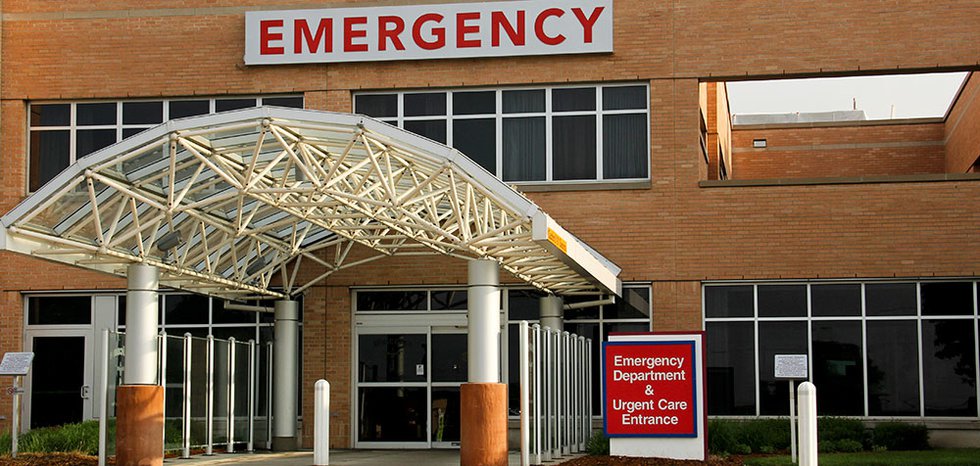
Organizing a Medical History
A trip to the emergency room made me realize why caregivers are advised to organize heath information. Like many caregivers, I share the task of going with my loved one to appointments. My sister usually takes our mom to the dentist, audiologist and optometrist. I take Mom to her physician, dermatologist and podiatrist. We cover for each other when work or travel demands it. I felt prepared until an emergency came.
When Mom broke her hip, I called an ambulance. When it arrived, I confidently recited Mom’s Medicare number. When asked what medications she took, I pulled out our basket of pill bottles. At the hospital, the questions got more complicated. Still, I knew enough to fill out the forms. Strangely, as I did the paperwork, I began to feel sharp pain in my lower belly. I was nauseous and feverish. I did not know it then, but I would be joining Mom in the hospital the next day with an emergency of my own – one requiring surgery and a six-day hospital stay.I realized that my mom’s care was far too dependent on facts held only in my head. As primary caregiver, I managed the insurance, filled prescriptions and kept doctors’ names and phone numbers in my password-protected data organizer. I knew I should organize Mom’s records, but I didn’t know how. As we both recovered, I looked for an easy way to keep her health information. I especially wanted an easy way to share it with others in case I am not around.
I now have a folder for paperwork that is portable and easy to maintain. It isn’t just for emergencies. We take it to every doctor visit. Now anyone who has the folder can see when Mom had her last flu shot, what medications she takes and that she had a malignant mole removed in 1981. We can all see when all medical appointments are scheduled. Even my brother, who lives at a distance, could answer medical questions if he had to take Mom to the doctor while visiting.
Information to collect
You probably have most of this information readily available. If not, begin with what you have and add information as you can.
Useful information to collect includes:
- Health insurance cards, Medicare cards, and so on
- Appointment reminder cards from health care providers
- A list of medications including dosages, frequency, date started and reason
- A medical history
- A list of emergency contacts, relationship, addresses and all phone numbers
- A sheet for recording the date of visits, the provider and any tests performed or instructions
- Any special logs such as blood pressure readings, blood sugar levels or symptoms
- A copy of a health care proxy, advanced directives or living will
- A power-of-attorney, if one is used
Easy organization
Our system has to be easy to update because, like most caregivers, my family is stretched pretty thin. Here are some tips for collecting and organizing information:Use a pocket folder or small three-ring binder that will hold several pages. We purchased a multi-page presentation folder with clear pockets from an office supply store.
- Use a bold color for the cover, such as red or yellow, so that it is easy to distinguish from other papers.
- Keep the folder in a handy location, such as a desk drawer near the entry. Make sure every potential caregiver knows where it is kept.
- Label the front boldly and clearly – EMERGENCY MEDICAL INFORMATION
- Use top loading, clear sheet protectors to hold papers. These make it easy to remove papers for photocopying or for handing to a healthcare worker.
- Pick up a business card from each healthcare provider you see. Cards usually contain the name, specialty, address, phone and fax number.
- Slip the business cards into vinyl page protectors meant to hold photos, baseball cards or disks. You can find three-ring page protectors like these at craft, hobby, or office supply stores.
- Each time you make an appointment, take the reminder card or jot the appointment details on a 3X5 card. Slip these cards into a page protector just as you did the business cards.
- Keep old appointment cards if you don’t want to take the trouble of recording visit details elsewhere.
- When you add any information to a document, put the date at the top of the page to show how current the data is.
- List an out-of-state emergency contact to be used in case of a widespread disaster.
- Photocopy important pages and cards and keep them elsewhere for extra protection.
- Search the Internet. Many Web sites provide blank forms for medical history, medication and other health records.
What should you keep in a medical history?
- Names of all physicians
- Known allergies or reactions to medications
- Medications including over-the-counter medicines, vitamins and herbs
- Health conditions and date of diagnosis
- Dates of most recent exams, tests and immunizations
- Dates and reasons for hospitalizations
- Dates and details of surgeries
- Dates and length of major illnesses
- History of smoking and use of alcohol
- Location of living will or medical directives
- History of exposure to dangerous conditions or hazards
- Family history including illnesses or conditions of parents and siblings
- Cause of death of parents and siblings and their age at death
I’m pretty sure that I will never again find Mother’s insurance cards inside an old purse looped over a hanger in the darkest corner of her closet. I hope I never again have to phone a doctor’s office to relay information I didn’t have with me at the appointment. But most of all, I’m confident that if I’m not around, someone else can tell the emergency room doctors what they need to know about my loved one.
